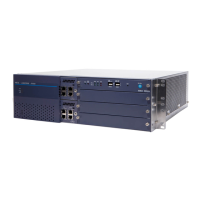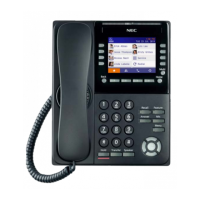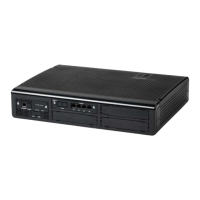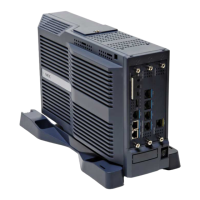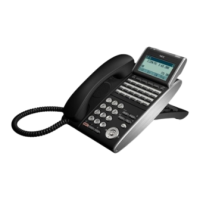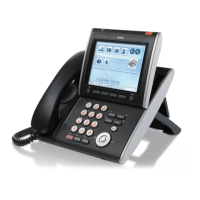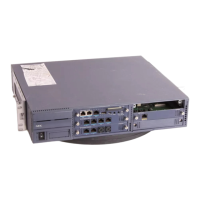Issue 1.0 UNIVERGE SV8100
2 - 516 Flexible System Numbering
Conditions
Programming follows a telephone extension number, not the port number in most cases. If
you relocate a telephone, you may need to change additional programming. For example, if
you change the extension assigned to a port in Program 11-02, the line key programming
does not follow. However, if you move the extension using the Station Relocation Feature,
the line key programming does follow.
Since making changes in Program 11-01 does not automatically make any other changes in
any other program, changing the number plan after the system is in operation may cause
problems in the following programs:
Any feature which requires dialing a code or extension number can be affected.
When the system searches the Dial Extension Analyze Table (PRG 11-20-01), the system
uses prefix searching, giving the lower table number the higher priority. For example, the
user programs 211 in table 1 and 2113 in table 2, then dials 2113, the system selects table 1.
PRG 11-01 Type 2
(Extension Number)
PRG 11-01 Type 1
(Service Codes)
11-02 11-08 15-12 22-11 11-10 11-14 21-11
11-04 11-17 16-01-01 25-06 11-11 11-15 30-03
11-06 15-01-01 15-14 30-03 11-12 15-07
11-07 15-07 21-11 11-13 15-14
0507, 0515, 0516, 0920, 1207, 2402,
2902, 2905, 2908
2402
Example for 310X Example for 3100X
10s Group
(4-digit)
100s Group
(5-digit)
11-01-01 = Dial 3
31 Digit 4 = (9)Dial Extension Analyze Table
11-01-01 = Dial 3
31 Digit 7 = (9)Dial Extension Analyze Table
11-20-01 Table 1 = Dial 310 11-20-01 Table 1 = Dial 3100
11-20-02 Table 1 = Intercom 11-20-02 Table 1 = Intercom
Example for 31000X Example for 310000X
1000s Group
(6-digit)
10,000s Group
(7-digit)
11-01-01 = Dial 3
31 Digit 4 = (9)Dial Extension Analyze Table
11-01-01 = Dial 3
31 Digit 7 = (9)Dial Extension Analyze Table
11-20-01 Table 1 = Dial 31000 11-20-01 Table 1 = Dial 310000
11-20-02 Table 1 = Intercom 11-20-02 Table 1 = Intercom

